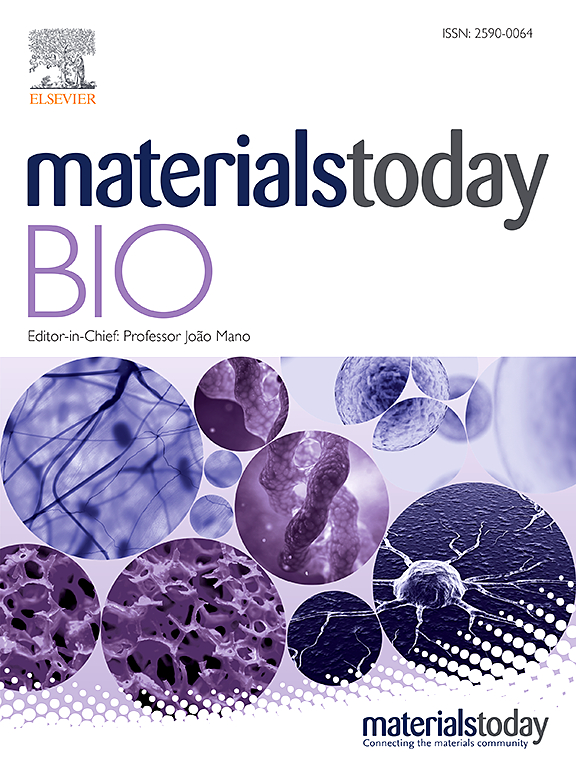A vascularized tumors-on-a-chip model for studying tumor-angiogenesis interplay, heterogeneity and drug responses
IF 8.7
1区 医学
Q1 ENGINEERING, BIOMEDICAL
引用次数: 0
Abstract
Current tumor models struggle to replicate the complexity of the tumor microenvironment, particularly endothelial sprouting and vascular-tumor interactions. To address these limitations, we developed a vascularized tumors-on-a-chip model by fusing tumor spheroids with HUVEC spheroids to simulate angiogenesis. The model incorporates hypoxia-driven cytokine secretion and dynamic endothelial penetration, enabling accurate recapitulation of angiogenic processes. Spheroids were optimized for size and viability, and four cancer types were studied, with GBM and A549 exhibiting the highest angiogenic potential, as confirmed by Z-stack imaging and qRT-PCR. Encapsulation in GelMA and integration into PDMS-based microfluidic chips provided a dynamic flow environment, mimicking in vivo drug delivery while enabling high-throughput drug screening. This chip-based system allows simultaneous testing of multiple drugs or tumors under physiologically relevant conditions, enhancing its translational potential. The platform was validated using doxorubicin and bevacizumab, revealing reduced VEGF secretion and dynamic cytokine responses, replicating vascular barriers. Further validation in murine models demonstrated its capacity to promote angiogenesis and mimic tumor-vessel interactions. This advanced tumors-on-a-chip model addresses critical shortcomings of conventional 2D and 3D systems and offers a transformative tool for preclinical drug evaluation and the development of precision oncology strategies, bridging the gap between in vitro testing and in vivo relevance.

求助全文
约1分钟内获得全文
求助全文
来源期刊

Materials Today Bio
Multiple-
CiteScore
8.30
自引率
4.90%
发文量
303
审稿时长
30 days
期刊介绍:
Materials Today Bio is a multidisciplinary journal that specializes in the intersection between biology and materials science, chemistry, physics, engineering, and medicine. It covers various aspects such as the design and assembly of new structures, their interaction with biological systems, functionalization, bioimaging, therapies, and diagnostics in healthcare. The journal aims to showcase the most significant advancements and discoveries in this field. As part of the Materials Today family, Materials Today Bio provides rigorous peer review, quick decision-making, and high visibility for authors. It is indexed in Scopus, PubMed Central, Emerging Sources, Citation Index (ESCI), and Directory of Open Access Journals (DOAJ).
 求助内容:
求助内容: 应助结果提醒方式:
应助结果提醒方式:


